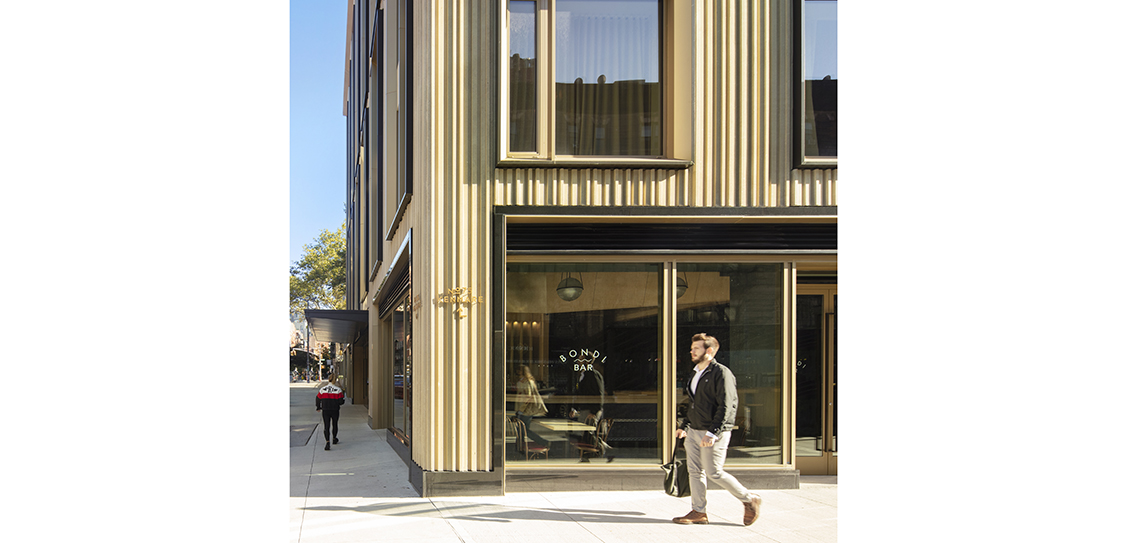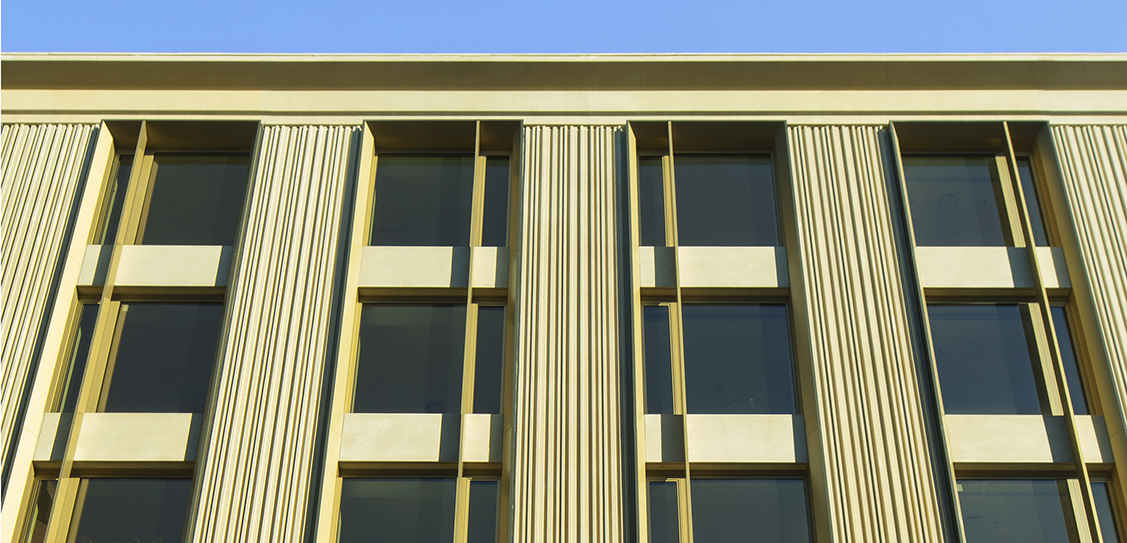Sitting at the pedestrian thoroughfare of Kenmare and Mulberry, in the heart of NoLita, at the junction of Soho, NoHo, the Lower East Side, and Little Italy, the 83,000 sq ft residential building in New York’s Manhattan offers 38 apartments ranging in size from 600 to 3,000 sq ft.
The careful selection of construction materials and the challenge of creating a new vision for a residential building knit into the very fabric of a neighbourhood were taken into consideration. Materiality, solidity, and proportional clarity are the fundamental pillars of 75 Kenmare’s architecture.
Its poetic concrete facade is made out of the simplest of materials and executed with imaginative detailing to create a building with a timeless and robust presence.
We wanted to create a building that both inspires and gives to its neighbourhood. Our goal was to create a building that is startlingly crisp and contemporary, but is also completely at ease with the many layers and lessons of history from its vibrant surroundings to create a singular sense of place in the city. Concrete is the perfect selection for 75 Kenmare. It is inherently malleable, allowing us to render simple linear channel-like forms that move in and out of their facade as they rise the vertical height of the building. With deceptive simplicity, each line and plane of the concrete is placed to modulate the shifting sunlight. These variations of negative and positive form make space in the skin of the building for the play of light and the ephemeral beauty of shade and shadow, creating a sense of poetry and joy for all who pass by.
The building’s massing speaks to the scale of the neighbourhood while contrasting with its surroundings through a distinctly detailed concrete facade. While concrete is not a conventional or common choice for a contemporary urban residential building, its humble ingredients can be cast into any shape, form, or colour, mapping the gritty residue of this authentic area and its rich history onto a highly original facade. The building takes inspiration from sources such as the work of Donald Judd, who lived in the area, and the pure materiality and sculpted light qualities seen in the architecture of Álvaro Siza and Rafael Moneo.
Inherent in the architecture is a commitment to creating a building that actively participates in the life of the neighbourhood. Sited on a prominent corner and adjacent to a public park, the massing of the building is organised to create six extensively windowed facades and an abundantly planted second-floor meditative garden that flows visually and spatially into the public park. This strategy makes softly-edged and generously permeable spaces that generate engaging views throughout and within the neighbourhood and the building. The multi storey bronze window frames set into the concrete skin respond to the proportions and architectural language of NoLita, and give the building an inviting human scale.
Above all, 75 Kenmare emphasises a life that is part of the neighbourhood rather than enclosed in privatised amenities. The generous entry to the building gives passers-by extended cover with an ample canopy above and a planted vertical garden wall that brings nature onto the street.
A detailed vitrine-like lobby is fronted with a wall of glass. Around the corner, a landscaped second-floor garden terrace cascades to the park below to offer a lush continuity with the public spaces of the neighbourhood.
The apartments inside are laid out in an open loft, a living style that originated in the area during the early 60s; additional resident facilities include a planted rooftop garden and a gym.



